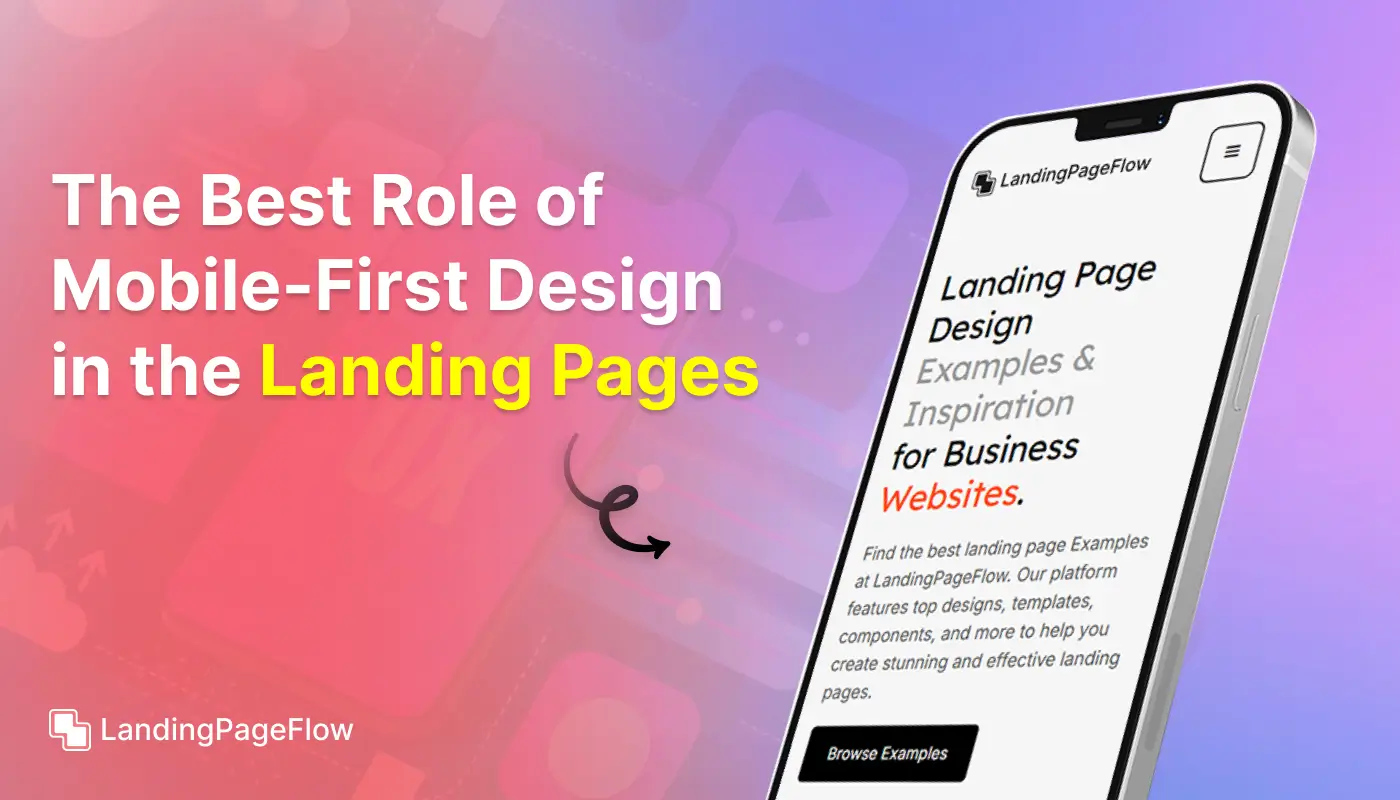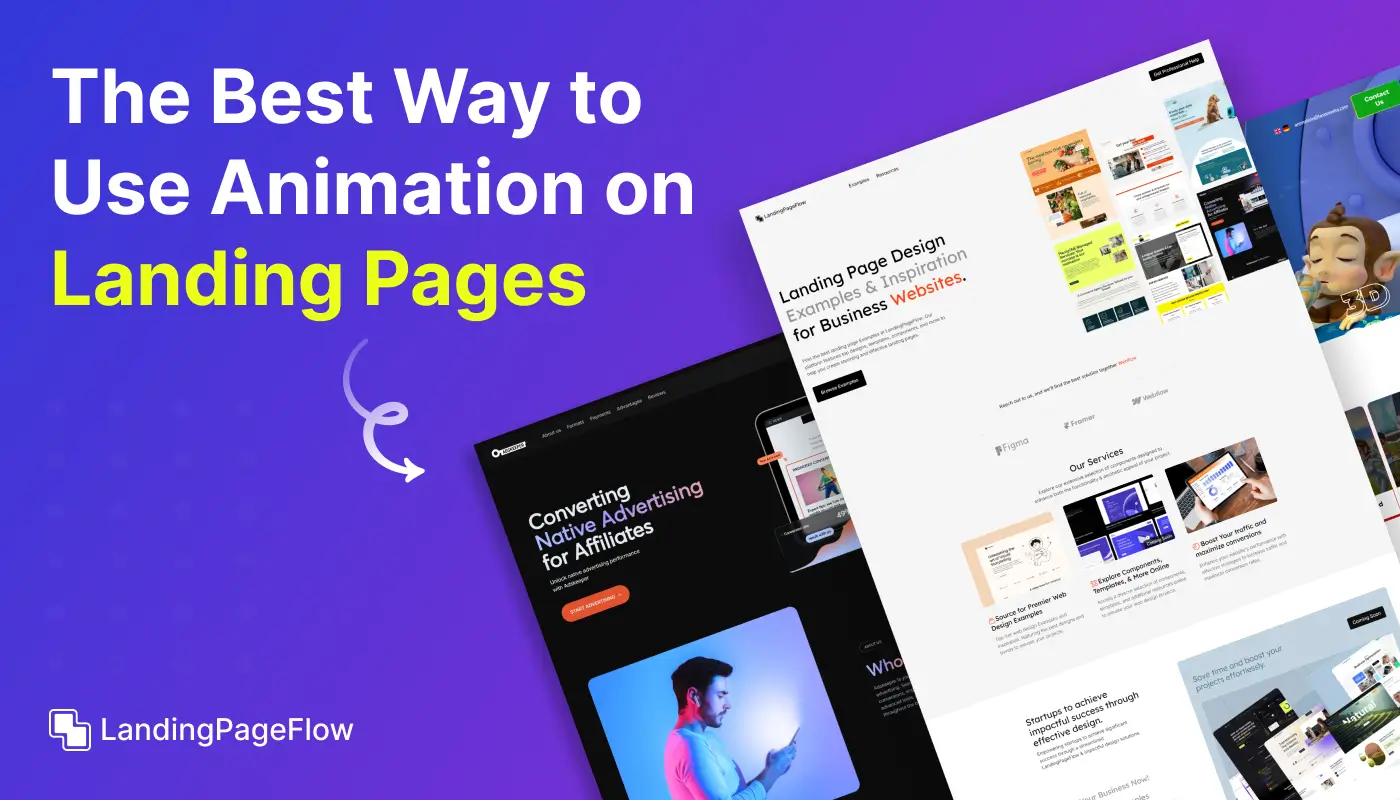Speed vs Aesthetics | The Best Landing Page Strategy
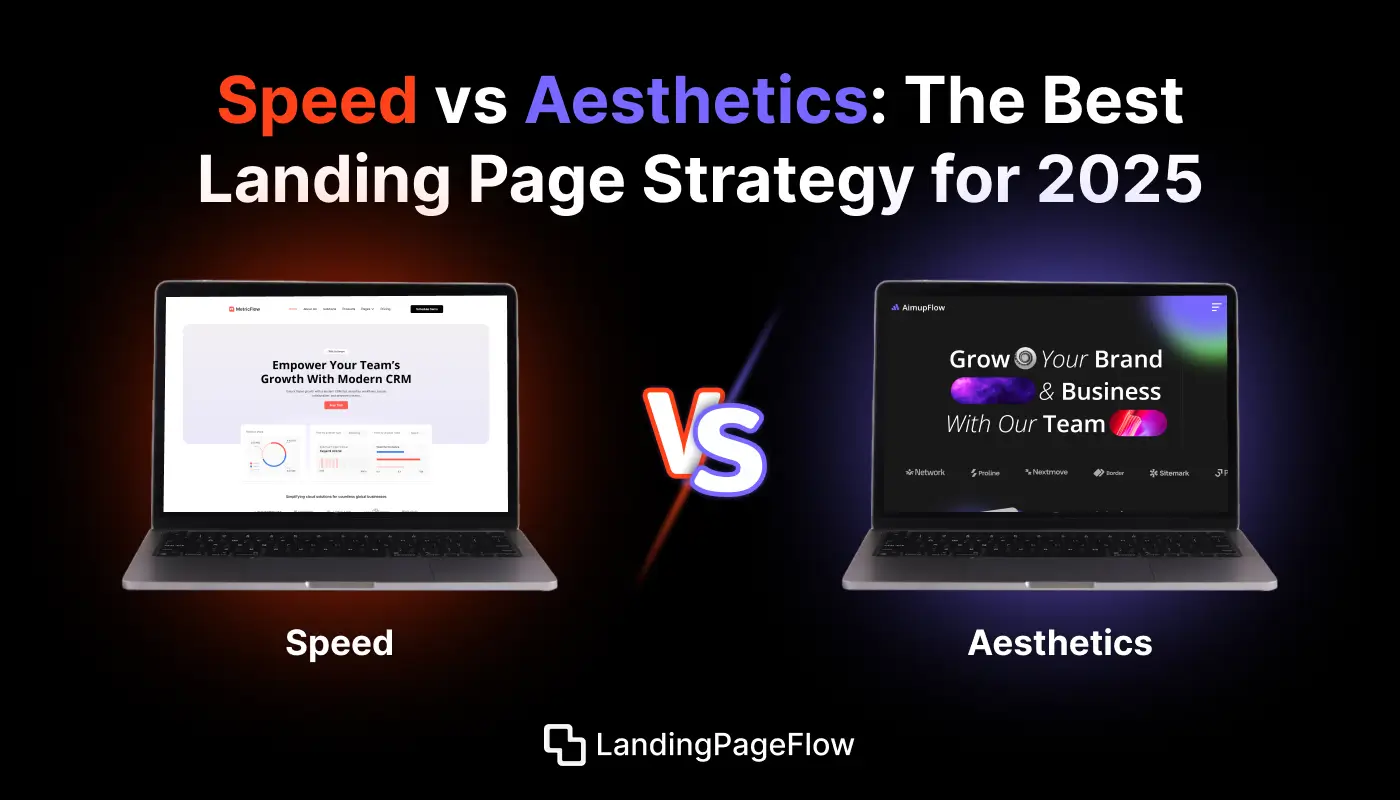
November 28, 2025
Around 2025, creating the perfect landing page strategy requires more than simply stunning graphics or lightning-fast speed; it involves striking the right balance between the two.
A fast-loading website is essential for SEO rankings, user retention, and mobile performance. But a bland or overly simple page can weaken your brand appeal and leave users unmotivated to engage or convert.
Design-heavy pages impress visually but can slow down load times, harming Google Core Web Vitals and pushing potential leads away.
However, blazingly fast pages keep little design may not efficiently direct users through your information or produce a memorable user experience.
Modern best landing pages achieve a clever mix between providing customers with clear, responsive layouts that load quickly, representing your brand identity, and motivating them to take action with meaningful imagery.
In this post, we’ll break down how to prioritize both speed optimization and visual storytelling to build landing pages that not only perform but convert and grow your business.
"Let’s build a landing page that balances form and function.
Book your free 15-minute strategy session today."
Table of Contents
- What is a Landing Page?
- Why is Speed Strategy Important in a Landing Page?
- Why is Aesthetics Strategy Important in a Landing Page?
- When to Use Speed Strategy Effectively?
- When to Use Aesthetics Strategy Effectively?
- We Tested 10 Rounds Between Speed vs Aesthetics
- The Winner is?
1. What is a Landing Page?
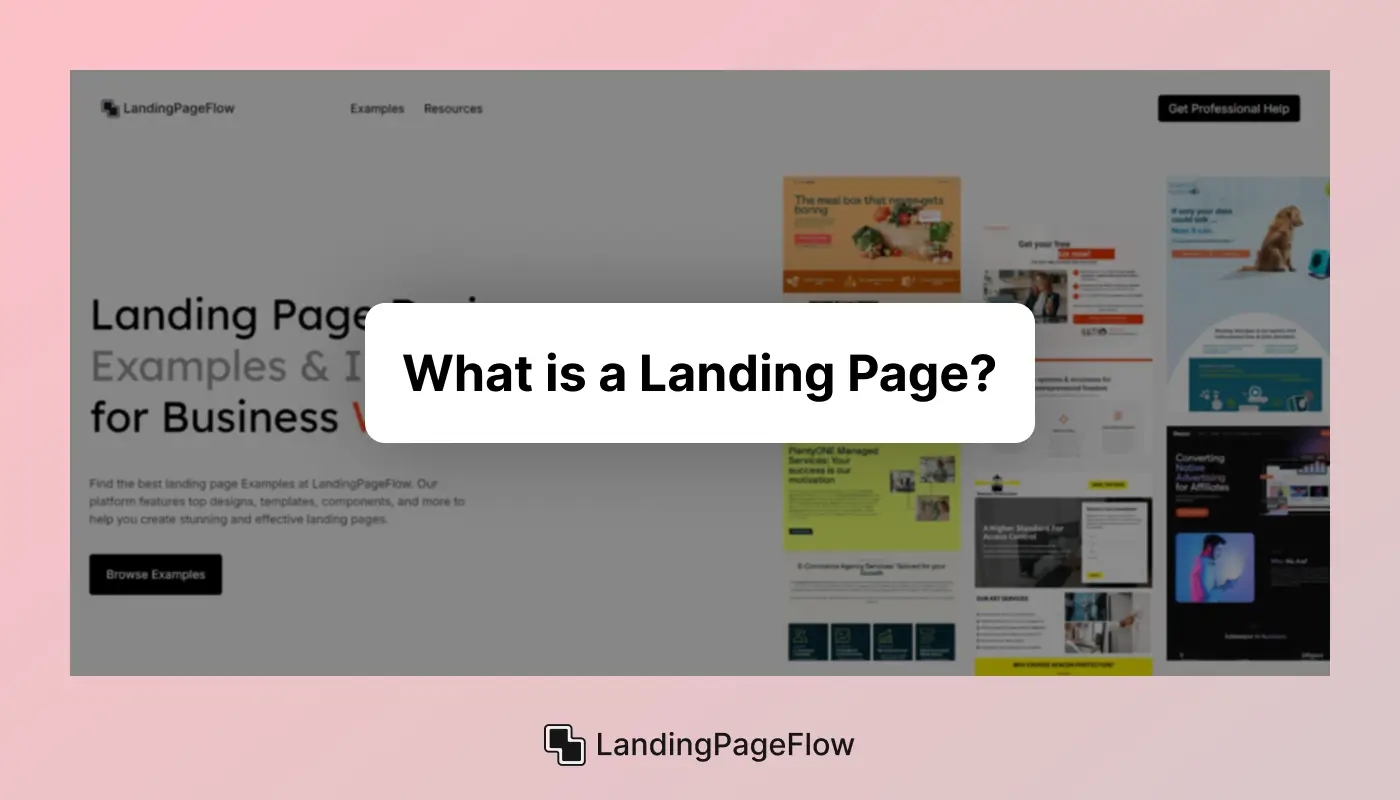
A landing page is a standalone web page crafted with a single purpose and driving visitors toward a specific call to action (CTA) such as signing up, purchasing, or downloading.
It typically serves as the entry point from focused campaigns like Google Ads, email marketing, or social media promotions.
Unlike a traditional homepage, a landing page removes distractions to increase conversion rates.
In 2025, high-performing landing pages combine fast loading speed, concise messaging, and user-focused design to capture attention and prompt immediate action.
Features of Landing Page:
1. Compelling Headline
Grabs attention instantly and communicates your offer’s main value.
2. Clear Call to Action (CTA)
A prominently placed button or link that tells users exactly what to do next.
3. Minimal Navigation
Reduces distractions by removing menus and external links.
4. Focused Content
Communicates benefits quickly using headlines, bullet points, or short sections.
5. Responsive Design
Ensures your landing page performs well across devices, especially mobile.
6. Fast Loading Speed
Improves user experience and supports SEO through Core Web Vitals compliance.
7. Trust Signals
Adds credibility through testimonials, client logos, ratings, or security badges.
2. Why is Speed Strategy Important in a Landing Page?
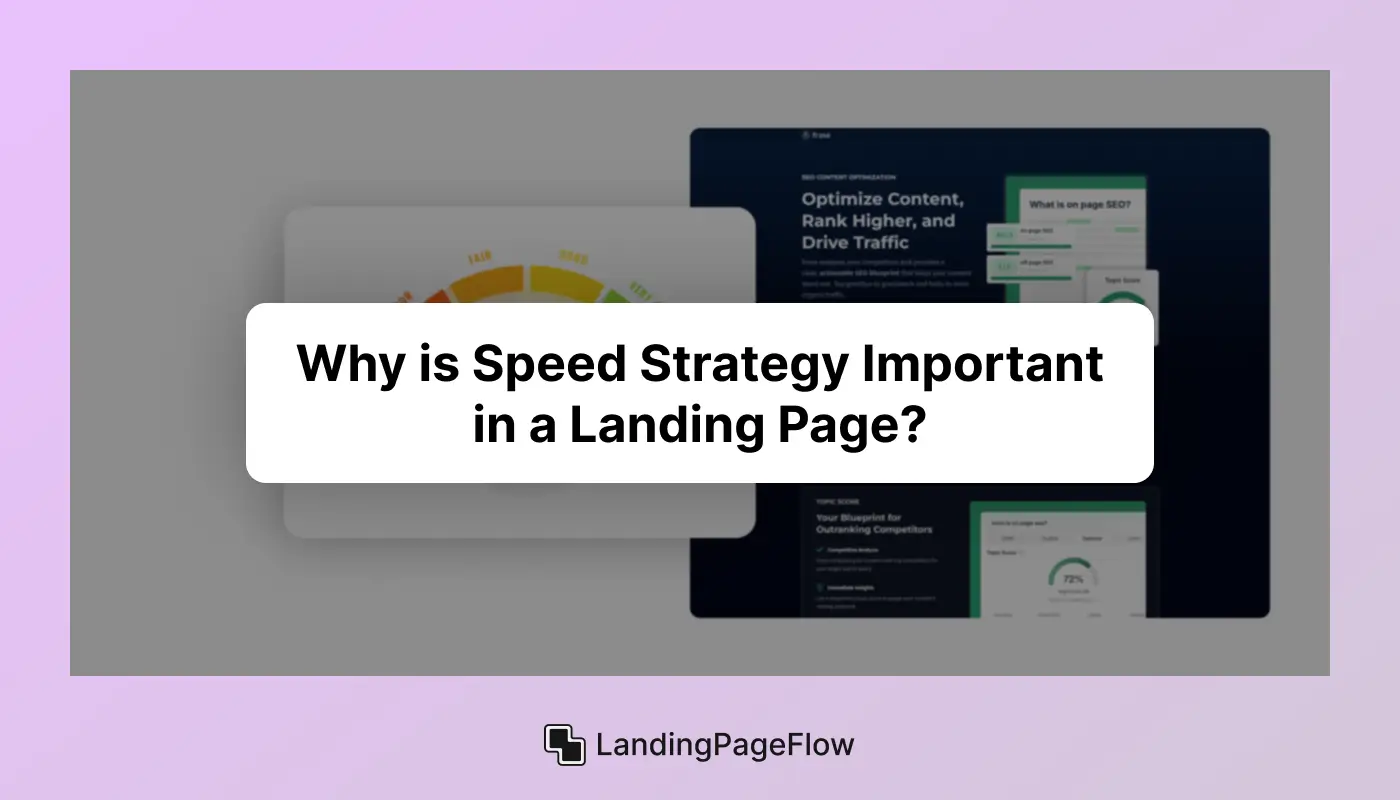
Implementing a strong speed strategy in your landing page directly affects user behavior, SEO rankings, and overall conversion rates. In 2025, digital users expect pages to load in under 2 seconds that or they leave.
A fast-loading landing page reduces bounce rates, keeping potential customers engaged long enough to absorb your message or complete an action. Google also uses page speed as a ranking factor, meaning slower pages get penalized in search visibility.
On mobile, where most users now browse, even a 1-second delay can decrease conversions by up to 20%. Quick-loading pages also comply with Core Web Vitals, boosting your credibility in both user and algorithmic eyes.
Ultimately, speed isn't just about performance, with it’s about trust, retention, and driving users smoothly toward your CTA.
3. Why is Aesthetics Strategy Important in a Landing Page?
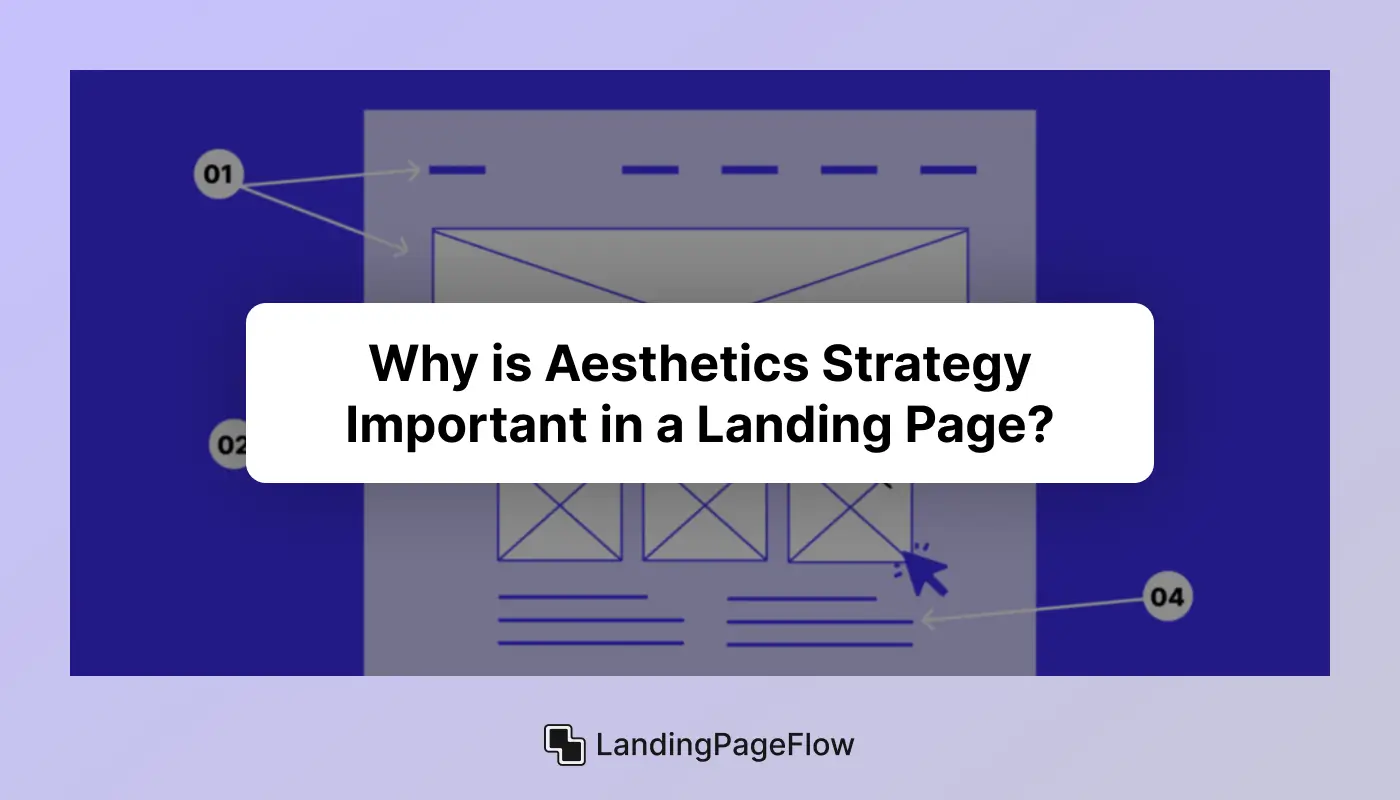
A compelling aesthetic strategy shapes how users perceive your brand the moment they land on your page. Until 2025, consumers want brand continuity, emotional connection, and visual clarity in addition to functionality.
A well-designed landing page builds trust and creates a professional first impression. Strategic use of color, typography, layout, and whitespace can guide attention to key messages and CTAs, increasing the chance of engagement.
Strong visual storytelling not only reinforces your brand identity but also helps communicate value quickly, especially to users who skim rather than read. Aesthetic appeal also enhances usability, reducing friction as visitors scroll or navigate.
Aesthetics become conversion power when design is in line with the user's purpose, turning your landing page from a static display into an engaging experience.
4. When to Use Speed Strategy Effectively?
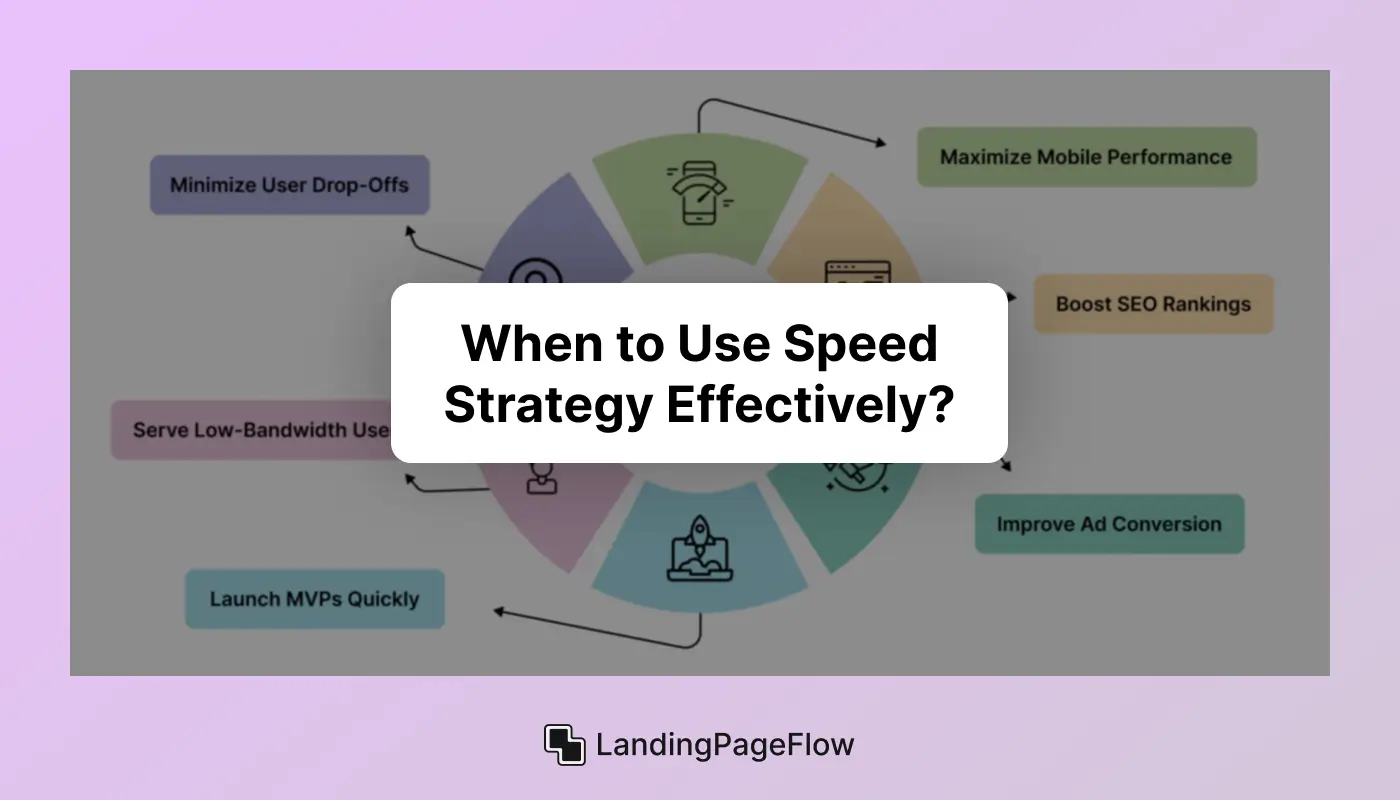
Focusing on page speed is crucial for conversion-driven design. These scenarios reveal when a speed-first approach is the right strategy for high-performing landing pages in 2025.
1. Maximize Mobile Performance
Essential when targeting mobile users, where load time directly affects bounce rate and engagement.
2. Boost SEO Rankings
Vital for websites aiming to appear on Google's first page, as speed is a Core Web Vitals factor.
3. Improve Ad Conversion
Best for PPC or paid ad campaigns, where instant loading reduces drop-offs and boosts ROI.
4. Launch MVPs Quickly
Ideal when you’re testing offers or validating ideas and need a lean, fast-loading landing page.
5. Serve Low-Bandwidth Users
Perfect for audiences in regions with slower internet speeds or limited device performance.
6. Minimize User Drop-Offs
Crucial for products or services with short attention spans, where delays cause abandonment.
5. When to Use Aesthetics Strategy Effectively?
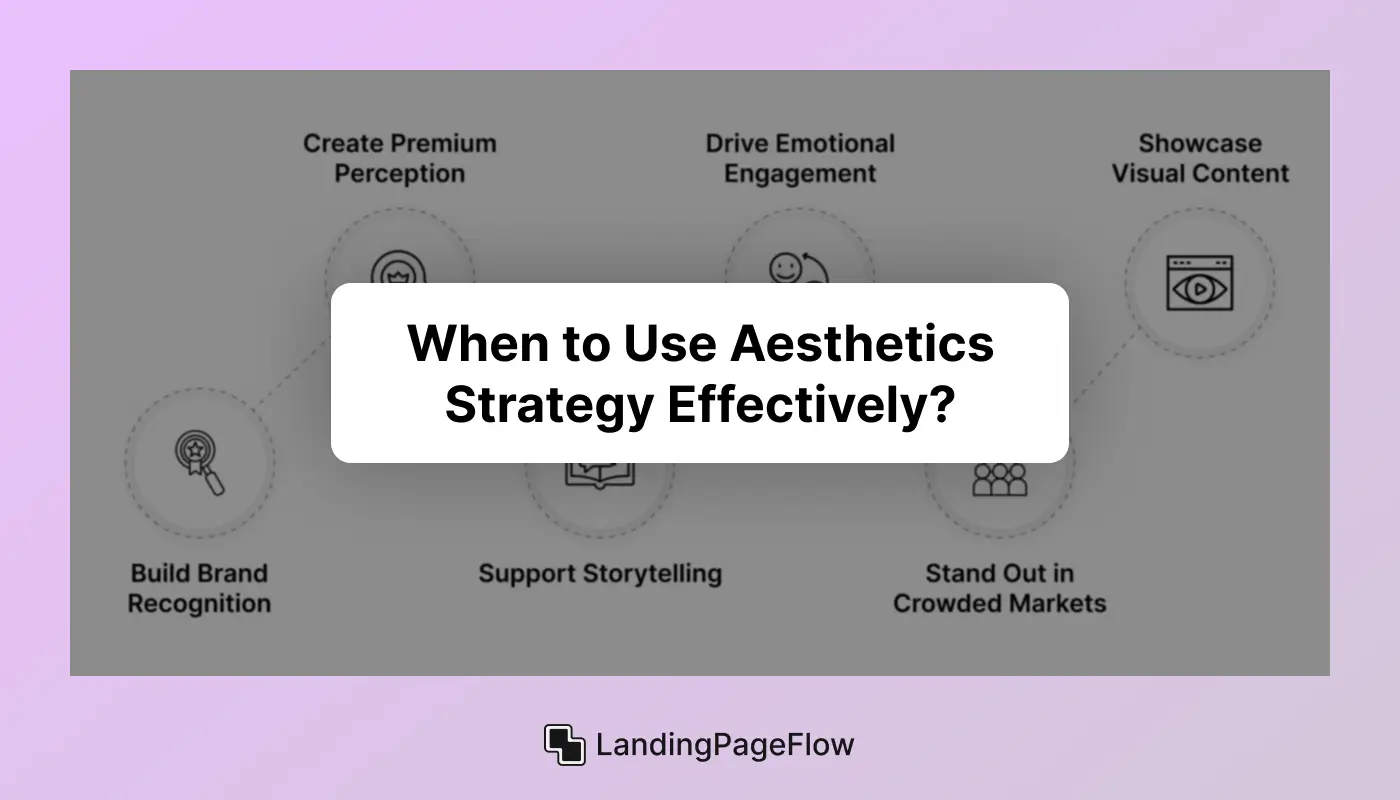
A strong visual strategy elevates user experience and brand perception. These situations show that focusing on aesthetics makes the biggest impact on your landing page.
1. Build Brand Recognition
Ideal for startups or lifestyle brands looking to establish a unique visual identity and emotional appeal.
2. Create Premium Perception
Best for high-end products or services where design influences perceived value and trust.
3. Support Storytelling
Effective for campaigns that rely on visuals, animations, or interactive media to guide users through a narrative.
4. Drive Emotional Engagement
Useful when you want users to feel inspired, reassured, or excited, they are great for wellness, fashion, and creative niches.
5. Stand Out in Crowded Markets
Crucial for industries with heavy competition where striking design helps differentiate and capture attention.
6. Showcase Visual Content
Perfect for portfolios, product showcases, or anything where images and layouts speak louder than text.
6. We Tested 10 Rounds Between Speed vs Aesthetics

Round 1: First Impression Appeal
Speed Strategy
Speed strategy delivers instant engagement by reducing load time and ensuring content appears almost immediately. It builds trust quickly through seamless performance, minimizing friction during a user's first interaction. This approach is especially effective for capturing attention on mobile and low-bandwidth connections where speed equals satisfaction.
Aesthetics Strategy
Aesthetics strategy captivates visitors through visual design, using layout, color, typography, and imagery to create an emotional connection. It crafts a powerful first impression by reflecting brand personality and setting the tone for the user journey. This strategy shines when design storytelling is crucial to drawing users in.
Final Verdict
Aesthetics strategy wins this round for its ability to create an emotive and memorable first impression. While speed grabs attention, visually appealing design keeps users intrigued, enhancing brand recall and engagement from the very first glance.

Round 2: Page Load Time
Speed Strategy
Speed strategy prioritizes ultra-fast page load time, reducing bounce rates and boosting user satisfaction. It ensures that content renders almost instantly, especially critical for mobile users and those with slower connections. Quick load times enhance SEO performance and improve overall site efficiency.
Aesthetics Strategy
Aesthetics strategy often includes high-resolution imagery, custom fonts, and animations that can impact page load time. While these elements enrich the visual experience, they may delay full rendering unless carefully optimized. Design-first pages need advanced techniques to maintain both beauty and performance balance.
Final Verdict
Speed strategy takes the lead in this round for its direct influence on loading speed, SEO, and usability. Aesthetics can impress, but not at the cost of delays, and users expect near-instant access, especially in 2025’s fast-paced digital world.
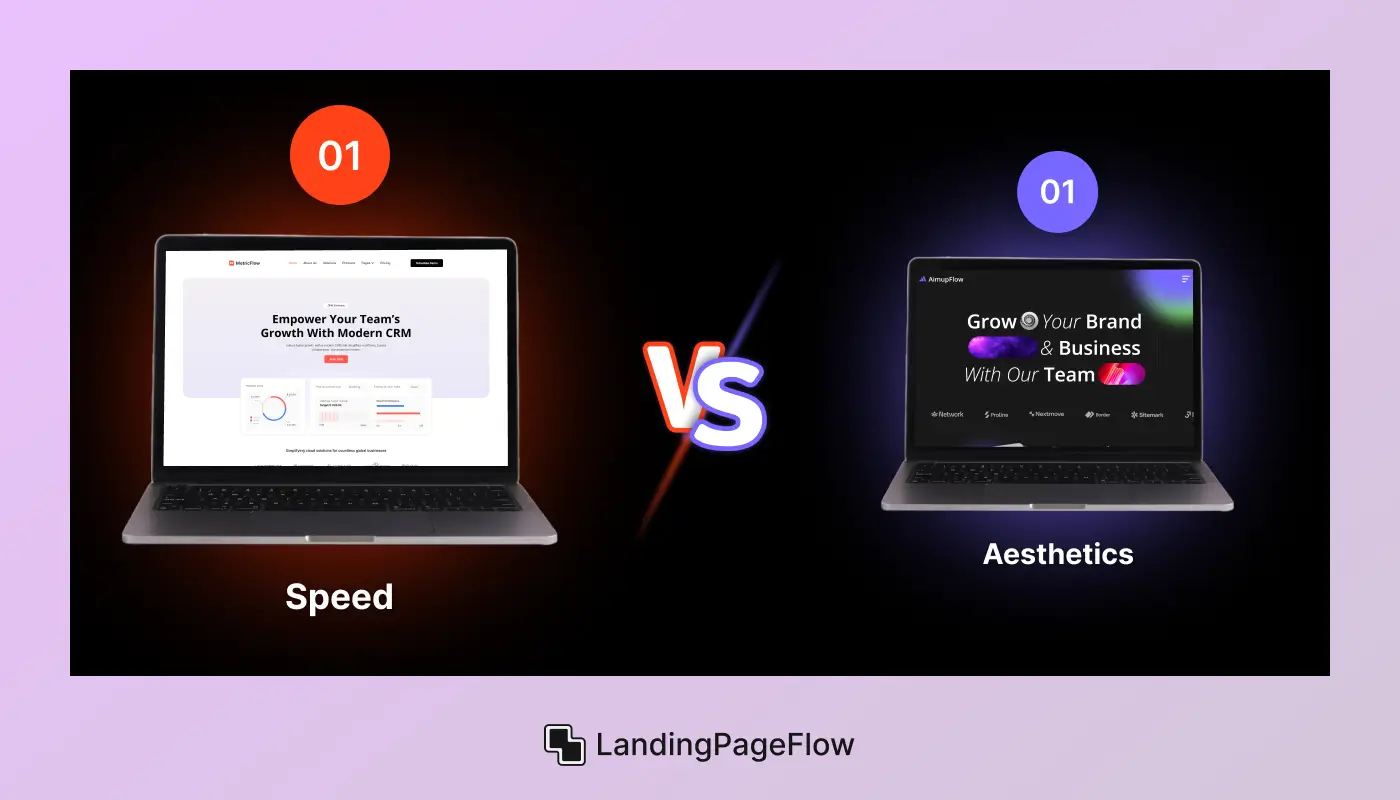
Round 3: Brand Recall After 24 Hours
Speed Strategy
Speed strategy helps users access content quickly but often lacks distinctive visual cues. While the interaction is smooth and efficient, minimal visuals or plain layouts may not leave a memorable impression. Users might remember the content, but not necessarily the brand identity behind it.
Aesthetics Strategy
Aesthetics strategy boosts brand recall by embedding visual elements, like color schemes, typography, and imagery, into the user’s memory. Strong design helps associate the brand’s personality with the experience, increasing chances of recognition after 24 hours or more.
Final Verdict
Aesthetics strategy wins this round by enhancing emotional connection, visual memory, and brand distinctiveness. While speed is functional, aesthetics make your brand unforgettable in a crowded digital space.

Round 4: Google Core Web Vitals Performance
Speed Strategy
Speed strategy directly aligns with Google Core Web Vitals, prioritizing fast loading performance, quick interactivity, and stable visual layout. Pages designed with speed-first approaches often excel in metrics like Largest Contentful Paint (LCP), First Input Delay (FID), and Cumulative Layout Shift (CLS), leading to higher SEO scores and better rankings.
Aesthetics Strategy
Aesthetics strategy sometimes challenges Core Web Vitals due to heavy graphics, animations, or large background videos. While visually compelling, such elements can increase load time and cause layout shifts, affecting performance scores unless carefully optimized.
Final Verdict
Speed strategy wins this round by ensuring top-tier Core Web Vitals compliance, contributing to faster indexing, improved user satisfaction, and stronger SEO performance in 2025.

Round 5: Visual Engagement & Click-Throughs
Speed Strategy
Speed strategy enhances basic usability and loading speed but often limits visual depth and emotional appeal. While fast pages support quick access, they may lack strong visual cues or engaging elements that prompt users to explore or click further.
Aesthetics Strategy
Aesthetics strategy excels in grabbing attention with bold visuals, animations, and creative layouts. These features increase visual engagement, encourage longer scroll times, and boost click-through rates by guiding the user journey with compelling design triggers.
Final Verdict
Aesthetics strategy wins this round by generating higher user interaction, improved visual retention, and increased conversion behavior through immersive and persuasive visuals.
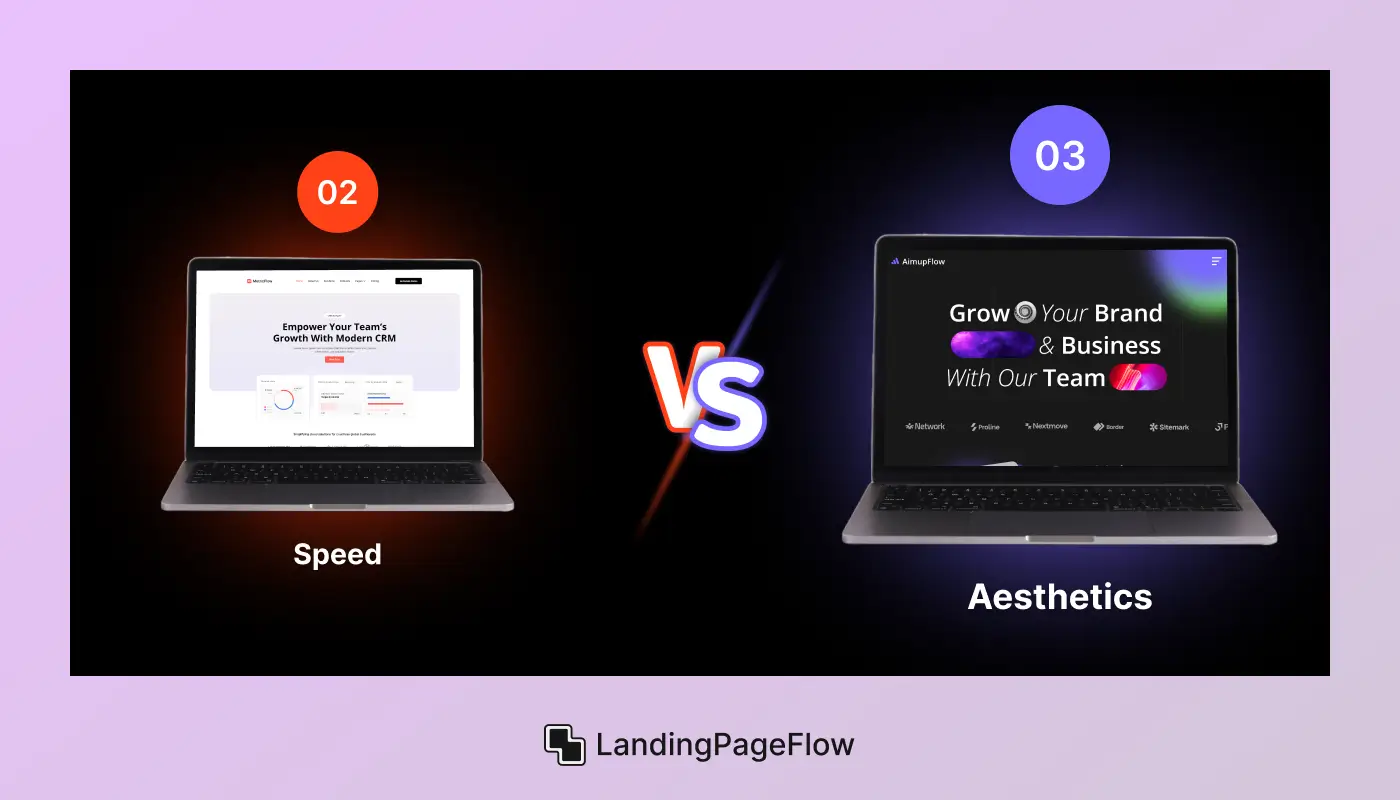
Round 6: Time to Interactive (TTI)
Speed Strategy
Speed strategy minimizes heavy scripts and design bloat, allowing pages to reach an interactive state much faster. By optimizing code and reducing unnecessary elements, it delivers excellent Time to Interactive (TTI) scores are especially important for mobile users and search engine ranking.
Aesthetics Strategy
Aesthetics strategy often involves complex visuals, third-party assets, and dynamic animations, which can delay TTI significantly. Users may see content quickly but experience a lag before they can fully interact, impacting overall performance metrics and user satisfaction.
Final Verdict
Speed strategy wins this round by delivering a faster, more efficient interactive experience, directly improving usability, SEO performance, and bounce rate reduction.
.webp)
Round 7: Mobile Performance on 3G Networks
Speed Strategy
Speed strategy thrives on low-bandwidth conditions like 3G networks, thanks to lightweight assets, minimal scripts, and compressed media files. It ensures faster loading, reduced data usage, and smoother mobile performance, making it ideal for global accessibility.
Aesthetics Strategy
Aesthetics strategy often relies on high-resolution visuals, animated components, and rich media that struggle on slow connections. On 3G, these elements can lead to lagging experiences, broken layouts, or delayed interactions and hurt the mobile user journey.
Final Verdict
Speed strategy wins this round, offering a more reliable experience across slower networks and supporting better mobile-first performance in 2025.
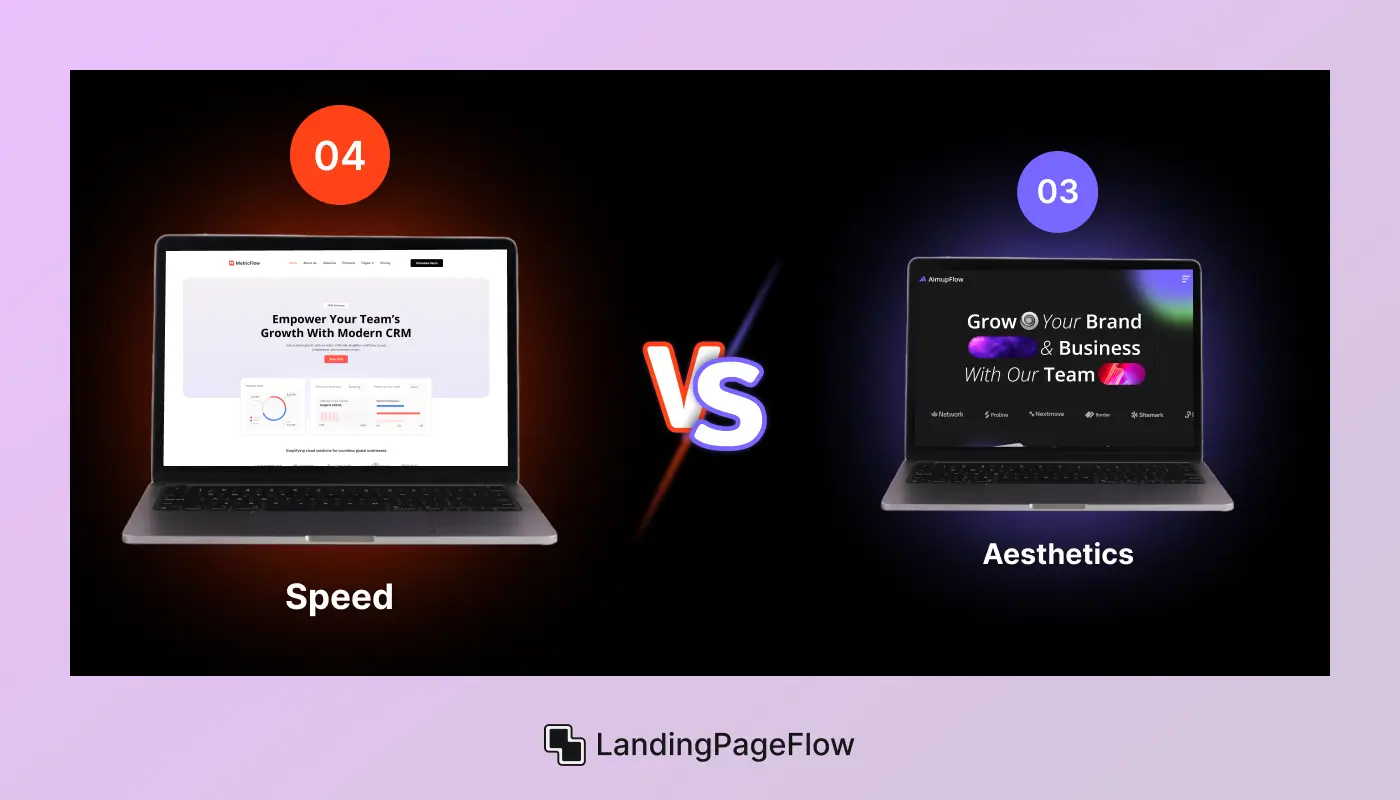
Round 8: Scroll Depth & Session Duration
Speed Strategy
Speed strategy encourages quick access to content, often resulting in shorter session durations but higher task completion rates. Users may scroll less as they find what they need faster, which works well for conversion-focused landing pages.
Aesthetics Strategy
Aesthetics strategy keeps users visually engaged, increasing scroll depth and encouraging longer session durations. Its immersive layout and interactive design elements invite exploration, supporting brand storytelling and emotional connection.
Final Verdict
Aesthetics strategy wins this round by driving deeper user engagement, longer sessions, and a more memorable on-site experience in 2025.
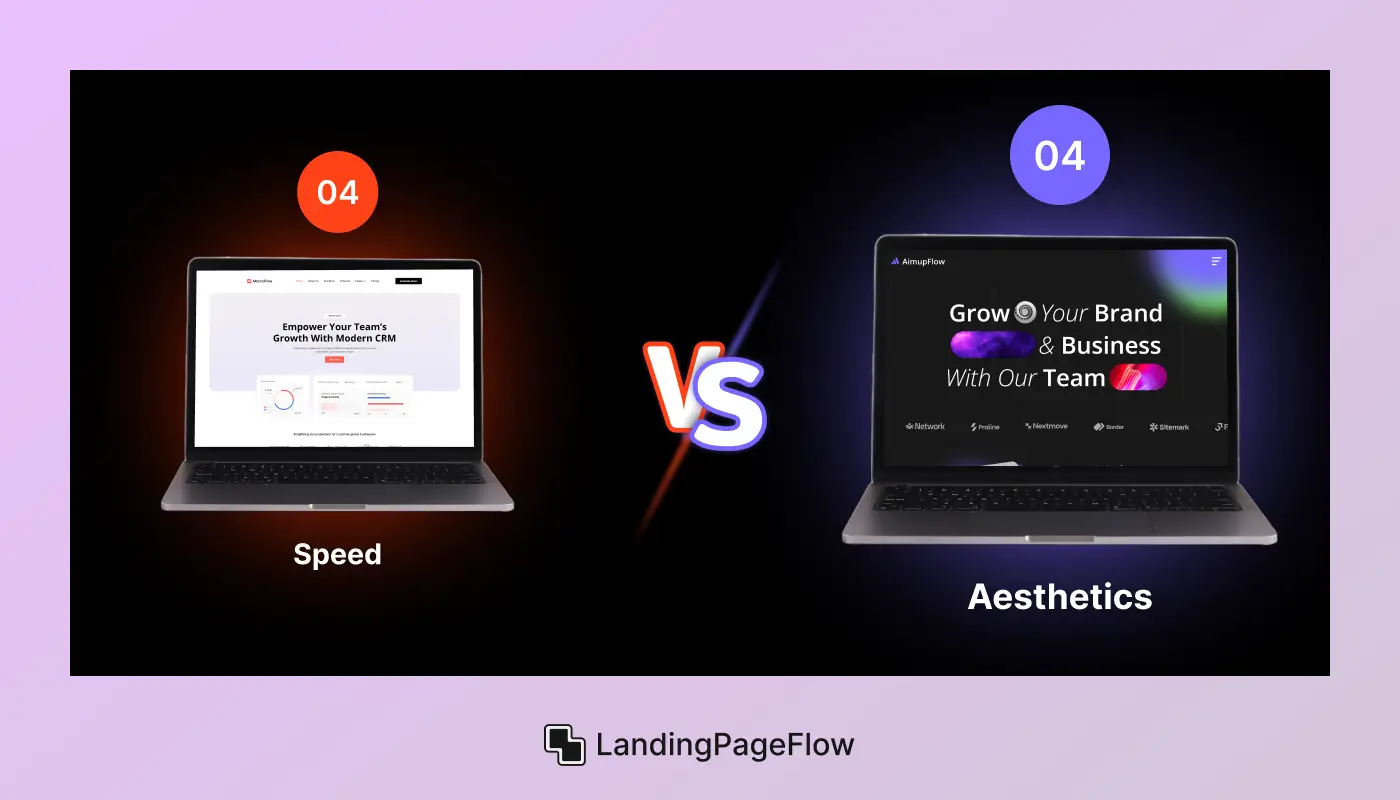
Round 9: SaaS Dashboard Functionality
Speed Strategy
Speed strategy is crucial for SaaS dashboards where users demand fast data access, real-time updates, and minimal friction. It emphasizes performance, clarity, and quick usability, ensuring professionals can complete tasks efficiently.
Aesthetics Strategy
Aesthetics strategy enhances visual hierarchy, introducing polished UI components and thoughtful design touches. While it adds branding and emotional appeal, it may sometimes increase load times or reduce clarity under heavy data visuals.
Final Verdict
Speed strategy wins this round by enabling faster data interpretation, better task efficiency, and smoother performance, with critical for modern SaaS applications in 2025.
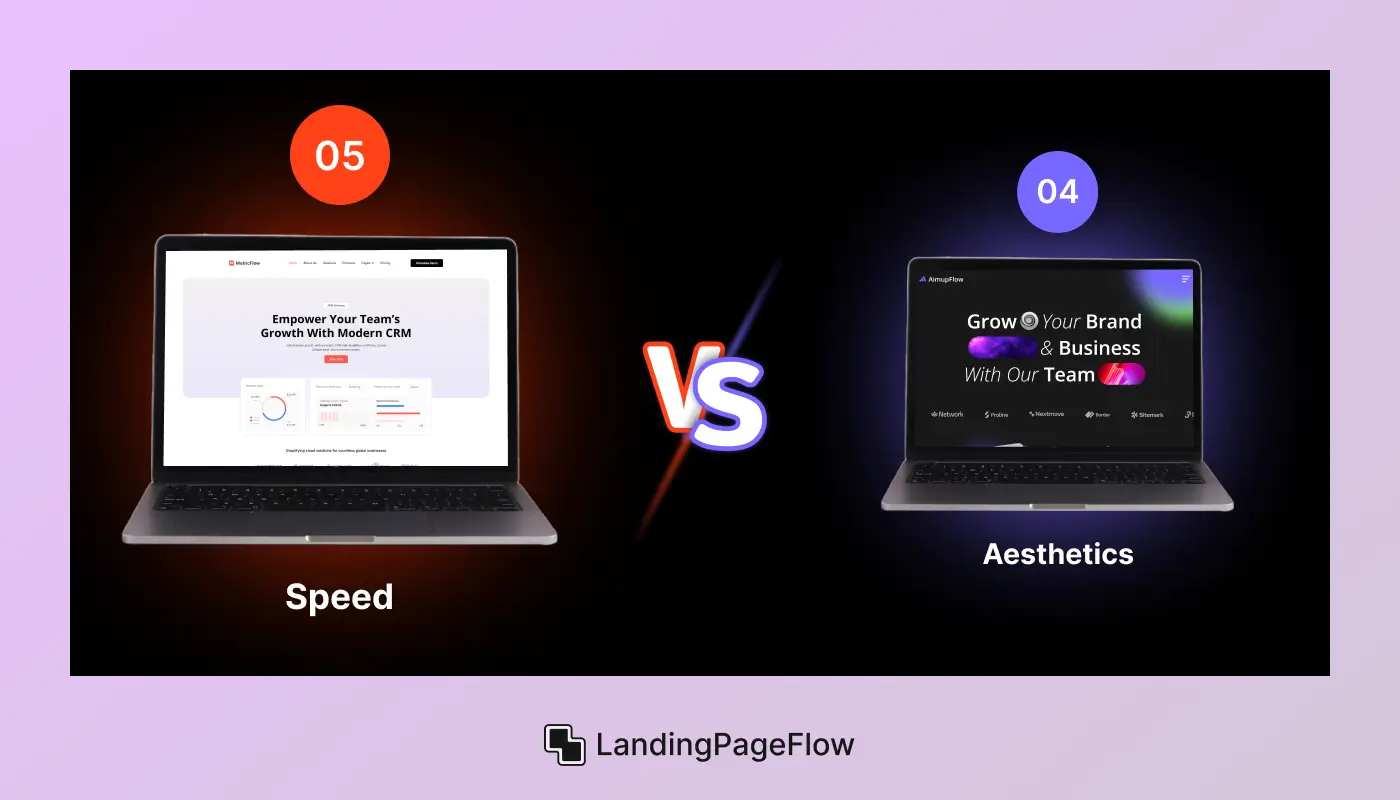
Final Round: Premium Product Conversions
Speed Strategy
A speed-focused landing page ensures fast load times and immediate interaction, reducing bounce rates and supporting impulse decisions. However, it may lack the visual richness required to justify premium pricing or build emotional appeal.
Aesthetics Strategy
An aesthetics-driven strategy helps elevate brand perception, showcasing luxury design, sophisticated visuals, and detail-rich layouts. This builds trust and reinforces the value of high-end products, nudging users toward premium conversions.
Final Verdict
Aesthetics strategy wins this round for its ability to convey luxury, evoke emotion, and justify higher pricing; they are key to converting premium product buyers in 2025.
7. The Winner is?
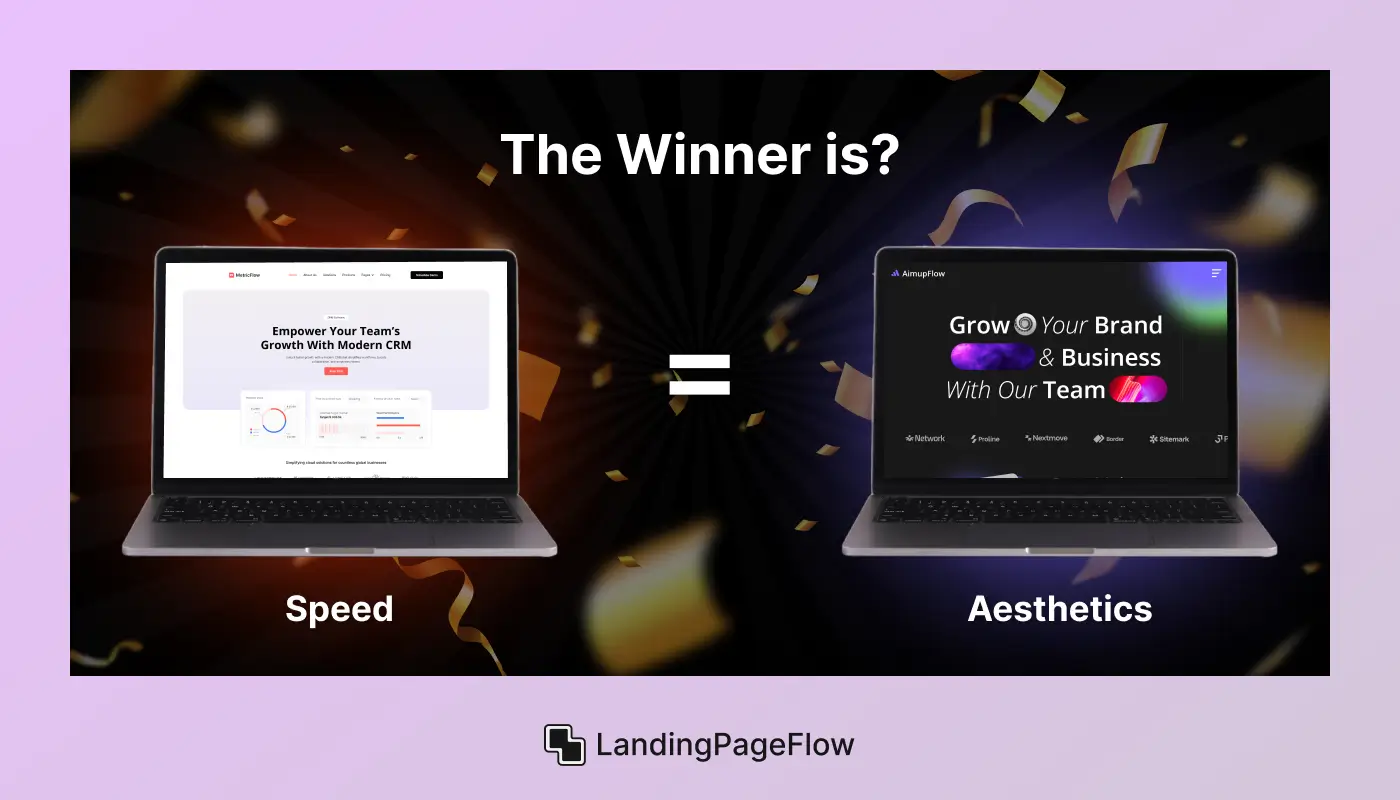
Speed Strategy and Aesthetics Strategy both bring powerful advantages to modern landing pages, but in our 10-round comparison, it’s a draw - 5 wins each - highlighting their unique value based on context and audience.
- Speed Strategy dominates in performance-driven areas like page load time, Core Web Vitals, and mobile optimization. It’s the best fit for fast-paced interactions, lean user journeys, and functional-first designs aimed at reducing friction and bounce.
- Aesthetics Strategy shines in areas requiring emotional connection, brand recall, and visual engagement. It converts better for premium products, creative brands, and visually rich experiences where storytelling and style matter.
Each approach serves a different goal:
- Speed Strategy fits SaaS dashboards, minimalist brands, and startups needing instant access and utility.
- Aesthetics Strategy supports luxury ecommerce, portfolio sites, and vision-driven landing pages that must wow and convert.
Note: "In 2025, success lies in how well you align strategy with intent. For startups chasing performance KPIs, speed rules. For brands crafting emotional narratives, aesthetics lead the way."

FAQ
1. What’s the key difference?
Speed focuses on performance and load time. Aesthetics aims to visually impress and engage users.
2. Which boosts conversions more?
Speed works best for SaaS and utility. Aesthetics drives results for premium, emotional, or lifestyle brands.
3. Is speed better for SEO?
Yes. Faster pages improve Core Web Vitals, bounce rate, and Google rankings.
4. Can I use both strategies?
Absolutely. Optimize for performance while keeping a clean, appealing visual design.
5. Why does design matter?
Good aesthetics improve brand recall, emotional connection, and click-through rates.
6. What improves page speed?
Use compressed images, lazy loading, minimal animations, and tools like PageSpeed Insights.
7. Does design impact branding?
Yes. Strong visuals create identity, trust, and brand memory.
















